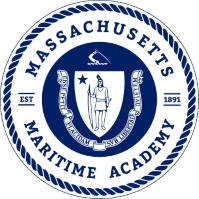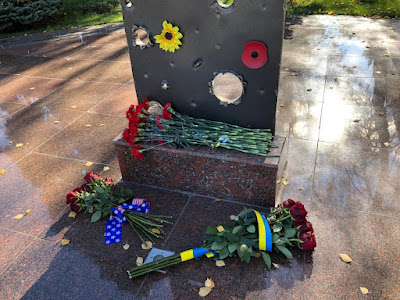The BONHOMME RICHARD fire report has the Surface Force in the news again, and one of our favorite ex-SWOs Bryan McGrath gave a speech to the Surface Navy Association's Washington DC chapter earlier today. He had a few things to get off his chest, and the things he said are worth a broader audience.
Bryan has been kind enough to send along the text of his remarks for publication here - well worth your time.
Bryan, over to you!
Speech to the DC Chapter of the Surface Navy Association
21 October 2021
“Three Rants”
As Prepared for Delivery
Thank you for the introduction, Captain Bryans. It was an honor to be asked to be here, and I am grateful for the opportunity.
I hope the folks of this chapter know how lucky we are to have Bob Bryans leading us while he’s doing incredibly important and difficult work over at OPNAV. He’s the best of the best.
When Bob asked me to do this talk, he requested a theme, and because this isn’t my first rodeo, I knew that the quicker I gave him one the quicker he’d get off my back about giving him one. So, I said, “Culture, Competition, and Conflict”, and we both went on with our lives. And while I have a feeling that I will hit each of those topics during my talk today, I ask that you give me some latitude to meander, and I’ll do so with the structure of three broad areas of concern that I call…the three rants.
Also, I want to get something out of the way up front. I am a consultant. I happen to have business relationships with the Navy, specifically agreements with the Commander of Naval Surface Forces in San Diego and the Director of Surface Warfare Programs at OPNAV N96. In those jobs, the government pays me to tell Admirals Kitchener and Schlise exactly what I think. And that is what I do. Sometimes they agree with me. Sometimes they don’t. At no point has either one of them or their predecessors ever asked me to change or modify my opinion to suit the Navy line, nor have I ever taken a position publicly that isn’t my own. Nothing I say is carried water for anyone else. Period. Are we clear?
Ok. Let’s get on with things.
Rant One: Good Competition
Let’s start with rant # 1, and that is, I want to talk about “Competition”. The previous administration centered its national security strategy and national defense strategy around the imperative of renewed great power competition. One doesn’t have to have a doctorate in international relations to see that we are elbow deep in great power competition again, and this was a rational response. Following this policy focus, the sea services promulgated a new maritime strategy, and the CNO updated his NAVPLAN, in BOTH CASES, raising the prominence of what has come to be known as the “competition phase” of the continuum of competition. The other phases of the continuum being “crisis” and “conflict”.
I believe all four of these documents—NSS, NDS, maritime strategy, and NAVPLAN—were well-aligned to the security environment we face, and all pointed squarely at seapower as a primary tool of action and influence. The fact that all four placed considerable focus on the competition phase led me to several conclusions.
First, competition is different than crisis, or conflict. It is how the United States Navy spends the overwhelming balance of its time. It is where the United States Navy (and seapower more generally), has its greatest impact, acting as it does as the guarantor of America’s security and prosperity.
The primary products of competition phase seapower are—as I said—security and prosperity, both of which owe their promotion primarily to one factor—the conventional deterrence of those who would disturb the peace.
Conventional deterrence is the ballgame, and as the Navy is the Service that promotes conventional deterrence where it matters and to a larger extent than any other element of American military power, one could and should have expected the Navy to receive more and more consistent resourcing.
Additionally, and for the interests of this audience and the biases of this speaker, no part of America’s arsenal is as critical to providing conventional deterrence where it matters than the Surface Force. Forward, distributed, networked, lethal, visible, and sustained surface forces.
Given the emphasis on competition, the focus on conventional deterrence, and the degree to which force structure discussions in 2020 seemed in no small part to be variations on the single theme of growing the Navy, it appeared as if an important point of consensus had been reached. The fact that it was reached after four years of TALKING ABOUT growing a Navy and with little or nothing DONE about it provided many of us with the nagging sense that the clock was running out on the consensus.
It is now late 2021, and it appears that consensus is dead. The concept of military competition and its desired by-product conventional deterrence has been replaced by something called “integrated deterrence”, a term which strikes me as a means to de-emphasize the military contribution to deterrence while emphasizing other “whole-of-government” contributions, which invariably are less expensive than maintaining proper fleet.
We saw our first evidence of this in the 2022 budget and its approach to shipbuilding, and we continue to see more evidence of it as time goes on. No one at OSD is talking about competition anymore, as we’ve entered the stage of defense planning that goes something like “when there aren’t resources available for both the deterrence of war and the conduct of war, defer to the latter”. In the process, we—the Navy, DoD, the United States—will field a Navy that is marginally better at fighting war and LESS able to deter war. I think this is a troubling and dangerous path, and I urge the Secretary of the Navy and the CNO to take every opportunity they can to advise against it.
I know it is hard to for the numbers people at OSD CAPE and N81 to quantify the benefits of conventional deterrence. I know it is far easier to do force on force analysis and come up with exchange ratios and campaign results. But that whole system ignores what we know to be true—that persistent, powerful naval force forward—specifically, surface forces—is the backbone of our conventional deterrence posture, and if we continue to de-emphasize powerful forward presence that creates doubt in the minds of potential opponents, we will be left with terrible decisions about whether and how to intervene when opportunistic opponents realize we’ve given up on the day-to-day competition. Critics of naval forward presence sometimes suggest that it destabilizes the security situation. Do you want to know what is even more destabilizing? The other guy having the perception that the competition is over.
A prominent voice in the national security world recently opined that we need to abandon this “cop on the beat” mentality, because we don’t have the forces required to carry it out. So, he’s telling me that instead, we should diminish the fleet while implementing more of an over-the horizon strategy that is an even less powerful deterrent?
How about we build the Navy we need?
There is talk of yet another force structure assessment in the wind, and my fever dream is that the Navy produces an assessment that is pretty consistent with the work it did in 2020, and then take a new position on that work. Well, not a new position, per se. But the position that the US Marine Corps has taken for much of my life. And that is, do the analysis and state the requirement. If the requirement is affordable within given resources, pursue it. If it is not, let political leadership know what the risks are and then do your best with the resources allocated. But never, NEVER, let available resources be the thing you start with when you seek to derive the requirement. And never, NEVER, change the requirement to fit the available resources.
Rant Two: Bad Competition
Ok—let’s move on to rant #2. And it is another rant about competition. But a different kind of competition.
I want to talk a little about the acquisition system by using a couple of examples of where I think the Navy has made grave errors, and then suggest that the time is ripe to make sure we don’t make that same error a third time.
About 11 years ago, the Navy moved forward with the Air and Missile Defense Radar, or AMDR program. A huge and critical effort, AMDR replaces the SPY 1 series of radars in surface combatants going forward, and it represented a franchise win for the company that competed and won the business.
I don’t know much about this competition, but the urban legend is that Raytheon put a ton of internal investment money into winning this contract. I can imagine the conversation between the business unit lead and the CFO, where the business unit lays out the opportunity, the costs, and upside potential once serial production began. Considerable resources were applied, Raytheon won, and we expect to see the first ship with a SPY 6 AMDR radar commissioned in 2024 or so. Or put another way, we will not see an operational SPY 6 for a couple of years on a ship that won’t deploy until later in the decade.
But that did not stop the visionaries of the Navy Acquisition system from conducting a competition recently to bring on a second source to produce SPY 6 radars?
If I am that Raytheon CFO, I gotta be coming out of my skull. “We invested all that money and before the first one is even fielded the Navy is trying to find someone to undercut our price?”
I think he or she has a good point.
Now, I am a political conservative. I am a capitalist. I believe in free and competitive markets.
But defense production is not a free and competitive market. It is skewed by externalities unknown to most businesses in America. It is a monopsony, or at least a near monopsony, with considerable constraints placed on doing business internationally.
For industry to make the kind of internal investment necessary to create the advanced capabilities that the Navy requires, they need to know that they will be able to get their money out of serial production. I’m all for competing but starting the competition before the first arrays are even placed just makes no sense.
But it isn’t just SPY 6. The same, or a similar move was made on the Navy’s SEWIP Block III program recently, and from what I can discover, similar conditions prevailed. In this case Northrop Grumman won the contract after considerable internal investment. No ship afloat has a fielded SEWIP Block III. Yet Navy acquisition recently sought to compete for serial production.
This is insane, and if this race to the bottom continues, it places the Navy’s Large Surface Combatant or DDG(X) program at serious risk. And here is why.
The Navy needs a sea-based, high-powered laser. For the purposes of this discussion, let’s call it the BAL—or Big-Ass Laser. Why does it need a Big-Ass Laser? Well, it needs a Big-Ass Laser because in a war with a big, aggressive country, after the carnage of an initial series of exchanges, our fleet will have to—as my friend Paul Giarra says—fight its way to the fight, and then fight through to the fight. It will be doing this against a country with a considerable ability to build missiles, and so we need a way to counter them that doesn’t bankrupt the United States.
To my mind, the logical place to put the Big-Ass Laser is on the BAS—or Big-Ass Ship. That is the DDG(X). The folks deriving requirements for this ship and doing trade studies and analyzing hull forms and all that stuff need to understand that the purpose of the Big-Ass Ship is to carry the Big-Ass Laser.
The case for the Big-Ass Laser is that we will not be able to operate within the contested area NEARLY confidently enough unless we can project power from protected sea space. The Big-Ass Laser will give us that confidence.
Now…back to the whole question of competition. Capable tier-1 defense firms are busy with all manner of research and engineering designed to position themselves to compete for the Big-Ass Laser. It is difficult to conceive of being competitive without spending a considerable amount of internal investment money. So here I am, the VP of Big-Ass Navy Lasers at Acme Big-Ass Laser company, and I am going to talk to my CFO about getting the money necessary to upscale our current efforts to be able to compete for this contract. I deliver my perfectly crafted pitch, and then she looks at me and says, “why would I give you a dime after what the Navy has done with SPY 6 and SEWIP? How can we go to our shareholders and say that this investment is wise, given that EVEN IF WE WIN, the Navy is going to create a competitor before the first unit is fielded?”
How do you answer that?
The bottom line folks is that if conventional deterrence fails and we get into a shooting war, we’re going to need to project power in order to fight our way back in. The high-power laser is the thing that we need to help us do that, and the real estate, cooling, and power for it will be provided by the DDG(X). Screw up the acquisition of the Big Ass Laser and the Big Ass Ship becomes an expensive luxury.
We must get this right.
Rant Three: Culture and Systems
Ok—my final rant. I want to talk about culture, or more to the point, the perception that there is something wrong with our culture in Surface Warfare. I’ve been on this rant for four and a half years now since the collisions of 2017.
Those two collisions created and enabled a chorus of critics to charge that the there were “systemic” problems in Surface Warfare, particularly in the Surface Warfare culture. I asserted then, and I continue to believe now, that what others want to attribute to culture or leadership or some other ill-defined systemic failure, can more properly be attributed to a lack of resources. Simply put, the fleet was on the ragged edge because there weren’t enough ships to do what was being asked of them. To the extent that the system contributed to the collisions, it was this.
But make no mistake about it. Those two ships had collisions because people who knew better, who knew what the rules were, and who knew what the right thing to do was—chose to do otherwise.
If you want to make the charge of systemic failure, it seems to me you have a responsibility to account for why that failure was confined to one theater and a small number of ships. ADM Davidson, former INDOPACOM Commander, got into some hot water when he suggested as much before Congress. And while that was neither the time nor the place to try and make that case, it is a case that needs to be made.
We have problems in Surface Warfare. What we do isn’t properly understood by policy-makers, we don’t do a good job in educating them, as a result, we get insufficient funding that results in too few ships, manning problems, deferred maintenance, and sub-optimized training opportunities.
My inherently testable hypothesis is that if we properly resourced Surface Warfare, you’d hear a hell of a lot less about systemic and cultural problems. We are maintaining nearly a similar number of ships deployed every day with 295 ships that we did thirty plus years ago with twice that number. You want a systemic problem, there it is.
The culture I know is one of mission accomplishment, and I have no desire to see this diluted.
Every generation has had ridiculous administrative burdens. That’s part of the job. What has changed is that the fleet we own and operate is insufficient to the operational tasks asked of it. Some say we ought to cut back on those tasks, that all this stuff we do around the world should be restrained, that we ought to bring the fleet home and operate it as a surge force with a bit of a cruising mindset, rather than a forward deployed force.
I’d be happy to go along with this, but only after I was convinced that the American people were content with no longer being top-dog. Because if you’re going to be the world’s dominant political, economic, military, and diplomatic power, you aren’t going to do it from Norfolk and San Diego. The nation that believes itself to be those things is reflected in a powerful, forward deployed Navy protecting and sustaining its security and prosperity, along with that of like-minded nations. At the center of that fleet is the surface force and the professionals who operate it. They are the nation’s primary conventional deterrent, they are the nation’s primary military diplomats, and they are the nation’s primary crisis response force forward.
It is time to resource them accordingly.
I only hope that people are listening.
Thank you, and I’d be happy to answer any questions you might have.
Bryan McGrath is the Managing Director of The FerryBridge Group. These views are his and do not represent any client.































